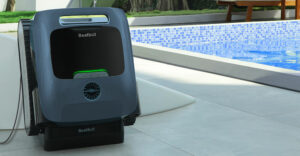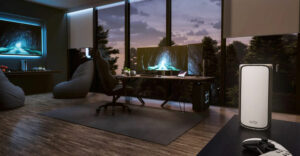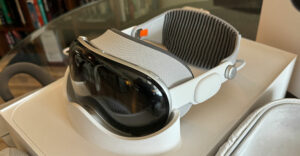
There’s a good reason why Hewlett-Packard notebook computers have become so popular with consumers. They give you a lot for your money.
Consider HP’s latest media center locomotive, the dv8000.
For around US$1200, you get a monster notebook with a 17-inch display, a state-of-the-art AMD Turion 64 processor and a discrete graphics processor — the ATI Radeon Xpress 200m — with 128 megabytes of video memory so you don’t have to rob RAM from your main system to run graphic intensiveprograms.
Uses ExpressCards
Because its target audience is the multimedia jock, the unit runs Microsoft’s Windows XP Media Center 2005 operating system.
I can’t say I’ve ever been too enthusiastic about that OS. It has always seemed to me to be a sneaky way to silo PC functions. Entertainment in this silo, business in that silo. If Apple can do everything with one operating system, why can’t Microsoft? Why do we need XP Home and XP Professional andXP Media Center?
One neat thing about running the notebook under Media Center, though, is it gives the box the capability to be used as a TiVo-style digital video recorder. To do that, however, you’ll need an optional HP ExpressCard TV Tuner ($180).
ExpressCards are the next generation PCMCIA cards that are smaller and have a catchier name than their predecessors.
Visually Arresting
Another attractive feature incorporated into the portable for the multimedia crowd is HP QuickPlay. The feature, which is gaining traction among notebook makers, allows you to watch DVD movies or play music without the agonizing wait for a system reboot.
Watching movies on the unit’s spacious wide screen is a treat, too. It has a maximum resolution of 1440-by-900 pixels and its BrightView technology is easy on the eyes.
If you want to crank your viewing pleasure up a notch, you can buy an 8000 with an Ultra BrightView screen. The “ultra” means dual-lamp technology is used to enrich the display and give it the kind of color depth found in LCD and plasma TVs.
Anyone messing with multimedia knows hard disk space can be consumed pretty quickly. A TV show — even one recorded in a super compressed format like MP4 — can take up to 200 megabytes of platter, and movies are in the four to six gigabyte range.
However, it will take longer to get a case of hard disk cramps with the 8000 than with other notebooks. That’s because you can purchase it with a dual hard drive storage system that can support a total of 240 gigabytes of data.
Etch a Disc
One of my favorite features in the 8000 is its LightScribe drive. The drive doesn’t come in the basic model, but it’s worth the upgrade in my book.
It does everything you’d expect from an optical drive these days — burn all manner of CDs and DVDs, including double layer DVDs — but it will also etch labels on them.
There’s software included with the notebook that supports the etching, as well as printing conventional paper labels. I gave up on paper a while ago. I’d play a disc a few times in my DVD player and then it would become unplayable. The problem disappeared after I ditched the paper labels.
You have to buy special LightScribe disks to etch labels on them and the etching process isn’t quick. It took 35 minutes on a disc I created. But it looks so much better than hand-titling a platter with a felt-tip marker.
At 8.1 pounds, the 8000 isn’t the type of machine you’d want to tote very far. However, the unit’s physical dimensions are relatively compact at 15.6 by 11.1 by 1.8 inches.
As a desktop replacement or portable multimedia platform, the 8000 is a great buy because it’s reasonably priced and rich in features.
John Mello is a freelance business and technology writer who can be reached at [email protected].





















































